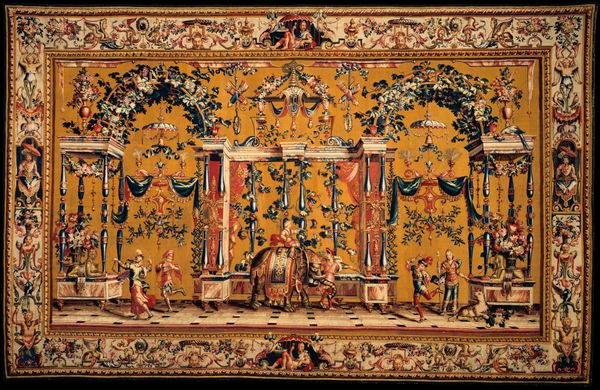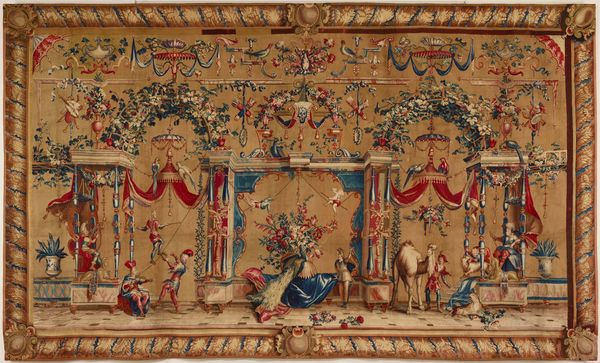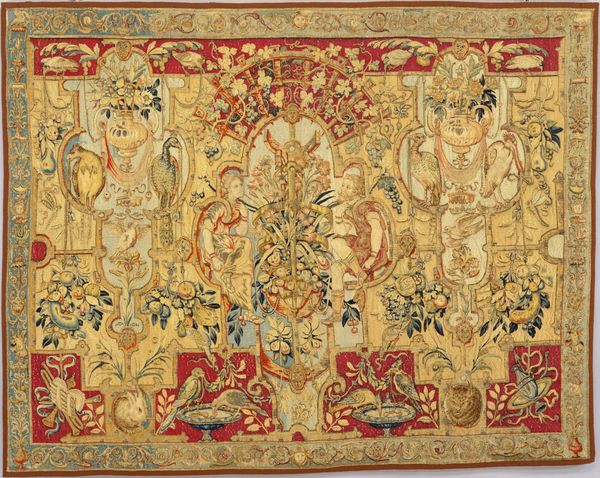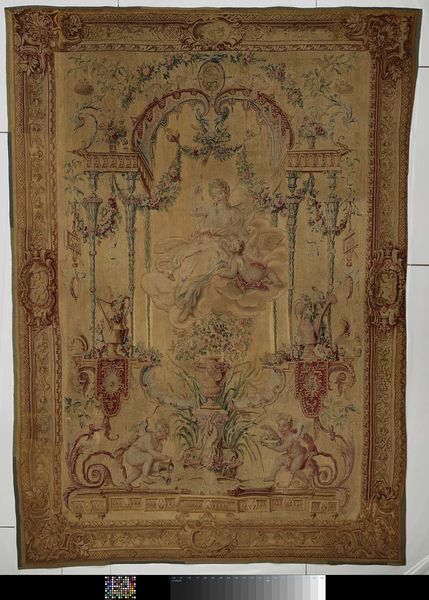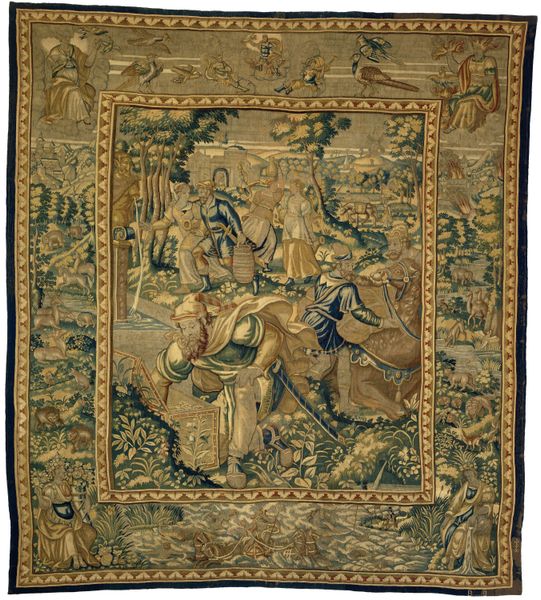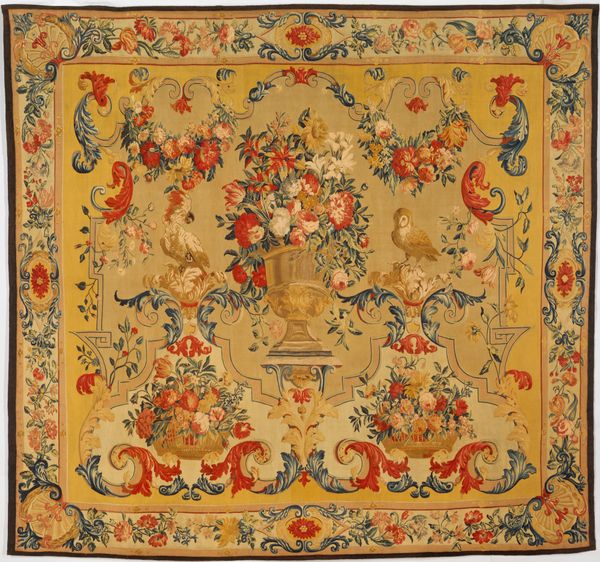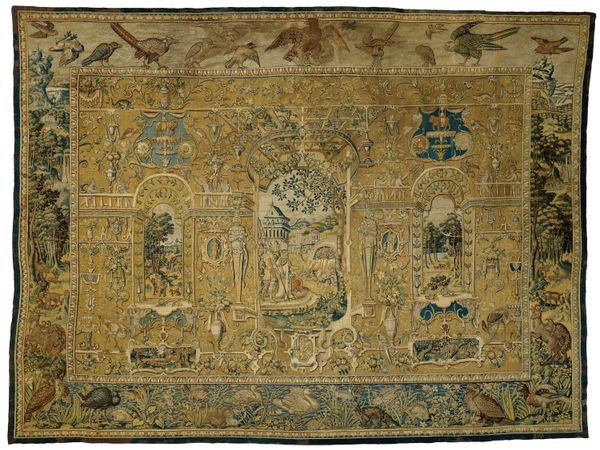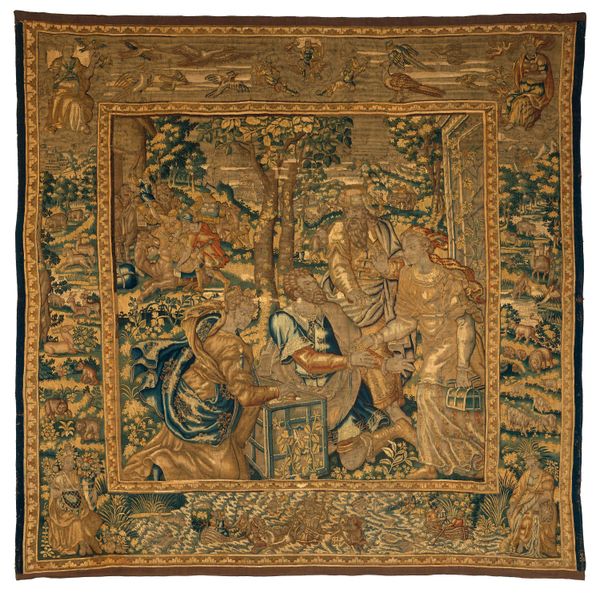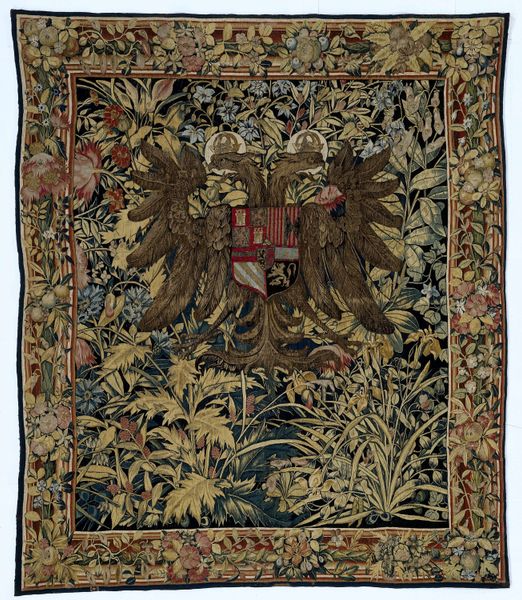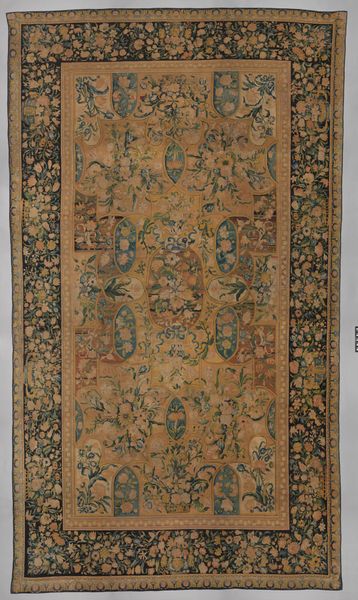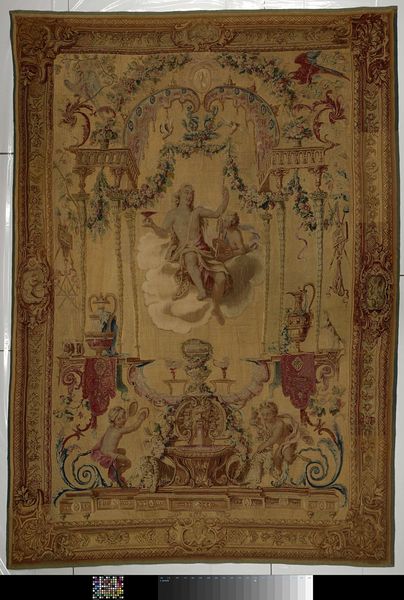
The Elephant, from The Berain Grotesques Series c. 1688 - 1732
0:00
0:00
weaving, textile
#
baroque
#
weaving
#
landscape
#
stain glass
#
textile
#
figuration
#
france
#
decorative-art
#
decorative art
Dimensions: 461.1 × 306.4 cm (181 5/8 × 120 3/4 in.)
Copyright: Public Domain
Jean-Baptiste Monnoyer created this tapestry, The Elephant, as part of The Berain Grotesques Series, and you can see it here at the Art Institute of Chicago. This fantastical scene, typical of the late 17th century in France, speaks volumes about the period's social and cultural obsessions. The tapestry blends exoticism with classical architecture, reflecting France's global aspirations under Louis XIV and its reverence for ancient civilizations. The image is filled with visual codes that would have been easily read by the aristocratic consumers of the time. The elephant, an exotic creature, symbolizes power and luxury, while the surrounding figures engage in theatrical gestures, reminiscent of courtly entertainment. The tapestry, most likely woven at the royal factory of Gobelins, represents a fusion of art, power, and industry. Historians delve into archives, fashion history, and studies of trade and diplomacy to better understand such works, emphasizing that art's meaning is always shaped by its specific social and institutional context.
Comments
No comments
Be the first to comment and join the conversation on the ultimate creative platform.
